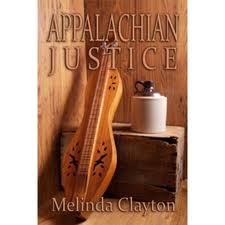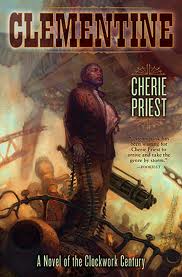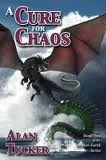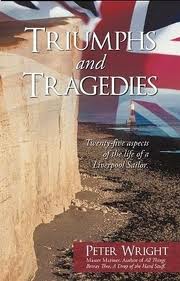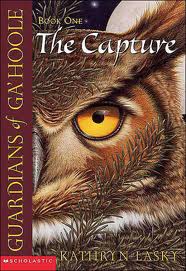As of today, March 10, 2011 my reviews will be appearing on my new website, tracyriva.com I hope to see all of you and remember to look there for all my newest reviews. also please follow me by RSS when you get to the site.
Posted in Blogs to Share, Relocation | Tagged new-website, Relocation, Tracy-Riva-com | Leave a Comment »
Imago Chronicles Book Four: The Tears of God
by L.T. Suzuki
copyright 2003 by L.T. Suzuki available from http://web.me.com/imagobooks
The imagination of Lorna Suzuki is a rich and complex place and nowhere is this made more apparent than in her stellar novel The Tears of God. The Tears of God is the fourth installment in the fantastic Imago Chronicles.
The land of Imago is a wondrous place where brave warriors and knights still fight to preserve their people and keep them free of any evil that threatens to harm them. Imago is people with humans, elves, knights, kings, princes, princesses and all the wonderful things you love to see in fantasy. It is also full of great evil that threatens the lives and loves of the characters you have come to care intensely about.
In The Tears of God Nayla finds herself battling evil in a new form, but this time it’s more personal than it’s ever been before and she must not fail or cost would be unimaginable. The Order is gathered together once again to confront an unknown enemy, or is it really an enemy from the past? Could it be one they thought they had vanquished?
Imago Chronicles Book Four: The Tears of God is the best of the Imago novels to date. Suzuki’s storytelling skills exceed all expectations and the story sets you in the middle of heart-stopping action from the outset. Suzuki handles multiple points of view with ease, always placing you where the story is the most intense. The pace is relentless in this addition to Imago Chronicles.
I highly recommend The Tears of God. It is a wonderful fantasy in the old tradition where the fates of not only individuals, but kingdoms, and entire lands are all at risk. The stakes are high, the action pounds through the pages like a herd of stampeding cattle and all you can do is get out-of-the-way and keep reading till the final climax. I highly recommend Imago Chronicles Book Four: The Tears of God. The Tears of God can absolutely be read as a stand-alone novel. There is no need to have read the previous novels in order to understand it, any backstory that is necessary is provided within the novel itself.
Posted in Book Reviews, Fantasy, Middle Grades, Young Adult | Tagged aerys, fantasy, imago-chronicles-book-four, imago-chronicles-book-four-the-rears-of-god, nayla, old-enemies-or-new, the-order, the-sorcerer, the-tears-of-god | Leave a Comment »
Appalachian Justice
by Melinda Clayton
copyright 2010 by Melinda Clayton, published by Vanilla Heart Publishing, print edition ISBN 978-1-935407-92-8, print edition 245 pgs. $14.95, eBook AISN B00466HSEK, $4.99 from Amazon or Barnes and Noble
Rarely has a character stuck in my head the way Billy May Platte of Appalachian Justice has. Melinda Clayton does such a rich job with the character you can hear her speaking plain as day by the end of her first chapter and her voices resonates long after she leaves the pages of the book behind. Other characters in the book are just as deeply drawn out, especially the antagonist who will make your skin crawl, almost literally.
Appalachian Justice is a tale of the cost of prejudice, the value of love and the price of courage. It is the story of everyday characters who happen to be settled in the Appalachian mountains during a period of time from the forties through modern day, though the vast majority of the story covers two critical times, one, a single day in the life of Billy May Platte that would change her forever, the other a few critical weeks, in the lives of four families that will once again change the face of the small mountain town and the lives of those living in it.
Appalachian Justice is visceral, reaching out to grab your emotions and senses from the first pages until the last. The tension is well-developed growing exponentially until it finally reaches the breaking point. It is a wonderful début album for Melinda Clayton and deserves to be read by every family trying to teach tolerance and the cost of prejudice. The story, set in the past unfortunately still happens today in community after community, most of which aren’t able to find a little Appalachian Justice.
Open the pages, but be prepared, while Appalachian Justice works to break down barriers and to bring about understanding of a few key issues it is raw and at times violent though both factors are critical to the story and are not done simply for shock value. It is a crucial story for our time and for the ages to come, by reading it we may evolve enough as a people to never need Appalachian Justice.
Posted in Book Reviews, Mature content | Tagged appalachian-justice, book-review, child-abuse, lesbian-fiction, rape | Leave a Comment »
After the War, Before the Peace
By Sharon Poppen
Copyright 2002 by Sharon Poppen
Published by Xlibris, paperback $22.95 ISBN10 1-4010-6545-7, eBook $9.99 ISBN10 1-4535-8286-X
After the War, Before the Peace is Sharon Poppen’s stunning debut novel set in the years following the American Civil War. With stunning characters who leap off the page and into your imagination and meticulous attention to detail Poppen’s novel is more than the story of one family ravaged by Civil War and left to rebuild their lives in a world that refused to acknowledge things like basic American civil rights, compensation for war crimes or the prosecution of war criminals.
The story of the Farrell family, whose patriarch, as well as two sons fought for the Confederate States of America and the wife and two younger sons left behind in Summerville, South Carolina will cause you to experience the gamut of human emotions from outrage and fear to love and joy. It is a tale of the triumphs, tragedies and deeply personal experiences of a family first torn apart by war, then separated by the need for retribution and revenge. It is a story of love that can overcome any obstacle, as well as love that fails to rise to the occasion and meet the challenges put before it. It is one family’s story that was echoed multiple times throughout a war ravaged country, where, in the author’s own words, “citizen fought against citizen.”
I found myself caught up in After in the War, Before the Peace within the first few pages. I read in bed sick, because I couldn’t put it down. I read it long past bedtime once I was recuperating because I just had to know what was going to happen next. When I awakened in the morning I reached for along with my morning cup of coffee. For seven days the Farrells were an integral part of my waking and sleeping moments and at no point in time was I sorry I had invested so much time and energy into their story. It left me deeply satisfied and looking forward to the sequel Lita’s Story – A Meandering Tale, which is due to be released sometime in the future by Virtual Tales Publishing who incidentally have also picked up After the War, Before the Peace for re-release sometime in 2012. For now though After the War, Before the Peace can be found through Xlibris and on Amazon’s website. Pick up a copy, it’s a wonderful novel I’m sure you’ll enjoy.
Posted in Book of the Month, Book Reviews, Mature | Tagged after-the-war-before-the-peace, amnesty, Farrell, first-in-series, post-American-civil-war, Sharon-Poppen, unpunished-war-crimes | Leave a Comment »
Clementine
by Cherie Priest
copyright 2010 by Cherie Priest, published by Subterranean Press, PO Box 190106, Burton, MI 48519 http://www.subterraneanpress.com ISBN 978-1-59606-366-2 available at Amazon and Barnes and Noble for $4.99 for the eBook
Clementine is the second installment set in Cherie Priest’s “Clockwork Century” world. It is a world where the American Civil War still continues, great and terrible machines are being made and the city of Seattle, Washington is walled in and quarantined.
Clementine picks up the story of Croggon Hainey, a runaway slave who years before stole a Union war dirigible he renamed the Clementine. The Clementine is stolen from Hainey so he sets off in a second stolen airship to try to recapture the Clementine and a race across the country, from Seattle, Washington to Louisville, Kentucky is on.
As Hainey races to recapture the Clementine, Maria Isabella Boyd, better known as “Belle” Boyd, a former Confederate spy has just gone to work for the Pinkerton National Detective Agency; her job, to make sure the Clementine makes it safely to her destination. She’s given the information that Hainey, a man wanted by the Confederacy Belle used to serve, is hot on her tail. Belle is given a free hand to deal with Hainey any way she wants, including turning him over to her former pals within the Confederate Army.
Clementine is a really good read, although I didn’t like it as much as the first Clockwork Century novel Boneshaker. There is plenty of action in Clementine, but I didn’t feel as though there was enough tension in the book. It’s there in places, but it builds and releases coming to only a moderate climax at the end of the book. I personally prefer novels that continue to build their tension throughout the book without any of the periodic drop-offs that I experienced while reading Clementine.
I really enjoyed the characters in Clementine and the interplay that takes place between them. I was already slightly acquainted with Croggon Hainey through Boneshaker. To me he is the Civil War equivalent of a Rambo, rushing in guns blazing saying to hell with the consequences. He knows he wants his ship back and he’ll run over anyone or anything that gets in his way.
Clementine is worth the time it takes to read it. It’s relatively short. It’s fun and it’s a definite must read if you are a fan of Priest and her Clockwork Century world.
Posted in Book Reviews | Tagged belle-boyd, cherie-priest, clementine, clockwork-century, croggon-hainey, dirigible, second-in-series, steampunk | Leave a Comment »
A Cure for Chaos
By Alan Tucker
Copyright 2011 by Alan Tucker, published by MAD Design, Inc paperback $14.99 from Amazon or Barnes and Noble ISBN 978-0982686430, eBook from Smashwords $3.99 ISBN 978-0-9826864-2-3
A Cure for Chaos is Alan Tucker’s much anticipated sequel to A Measure of Disorder the premier book in Tucker’s Mother-Earth series. A Cure for Chaos reacquaints us with beloved characters from A Measure of Disorder including Jenni Kershaw, now a freshman who still wants nothing more than to be an ordinary teen and who finds herself being forced into situations that repeatedly require her to rise above the ordinary into the extraordinary.
A Cure for Chaos takes you across America and into Mother, a world beyond ours where beings from our fairy tales and mythologies come to vivid life, offering a unique glance into a world that offers a chance to experience what life could be like if all these things were real.
Jenni Kershaw, one of our heroes/heroines finds her kind, helpful, giving nature keeps landing her in difficult and often dangerous situations. Newcomers to Mother find themselves undergoing transformations and Jenni makes an unforeseen sacrifice.
A Cure for Chaos offers Tucker’s unique and fantastical perspective to children, teens and adults alike in a wonderful world where dreams can come true and where they can be magical things. It is a visit to the best places in the human spirit, where good prevails and uniqueness is celebrated. It’s a stellar trip into the world of imagination and a voyage you will never want to return from. I can’t wait till the third volume comes out!
Posted in Book Reviews, Family, Middle Grades, Young Adult | Tagged a-cure-for-chaos, alan-tucker, book-review, mother-earth-series, mythology, second-in-series | Leave a Comment »
Triumphs and Tragedies: Twenty-five aspects of the life of a Liverpool Sailor
By Peter Wright
Copyright 2009 by Peter Wright, published by iUniverse, 1663 Liberty Drive, Bloomington, IN 47403, http://www.iuniverse.com, 1-800-Authors (1-800-288-4677)
$16.95 softcover, ISBN 978-1-4401-6814-7, $6.00 eBook 978-1-4401-6815-4 available from Amazon and iUniverse
Triumphs and Tragedies: Twenty-five aspects of the life of a Liverpool Sailor by Peter Wright may well qualify as one of the most interesting memoirs I have read. It is written in a straightforward, engaging manner that immediately worms it way into your mind. Going back and forth between memories of adult life and childhood at first, Wright takes through his memories of such great events as both World Wars, and his reactions to them, as well as his childhood reactions to the Great War (World War I). Even though World War I took place prior to Wrights birth it deeply impacted his life, leaving emotional and psychological wounds that would never heal.
Wright offers honest recollections of his life and experiences that are at humorous, painful, loving and full of every emotion in between. Wright doesn’t spare himself at all but opens himself up and lets the recollections and stories flow not only from his memory, but from his heart. What follows is an excerpt dealing with Wright’s days as a Catholic school boy:
“When I was in the fourth form, about fourteen years of age, the head sacristan appointed me thurifer for the upcoming high mass on Palm Sunday. The thurifer is the guy who carries the thurible, the brass sensor hung on chains which contains burning incense. Some of you reading this can imagine how I felt, especially when Sunday morning dawned – horrible. I knew I was going to make a mess of it. If I’d known exactly how I would have made a mess of it, I would have caught the next train back home…
…I had had a few lessons in mastering the art of manipulating the thurible and was, perhaps, less fearful of taking it off the hook in the sacristy than I might of otherwise been, but I doubt that anyone noticed or cared…
…Trading ever-so-carefully, almost on tip-toe, I led the procession into the chapel. I was amazed how much noise boys make when they simply stand up; snuffling, sneezing, farting and generally being clumsy. Everything went well, even when I handed the thurible to the priest so that he could bless the missal and whatever other objects had to be blessed. When he handed it back, however, I got my two middle fingers where they were supposed to be, but somehow only got the thumb-ring halfway over my thumb. The result was inevitable. With my full attention on manipulating the thumb-ring halfway over my thumb. The result was inevitable. With my full attention on manipulating the thumb-ring farther onto my thumb, I allowed the device to wobble, and while I frantically lifted and swung it, the beveled bottom of the incense cup struck the edge of one of the flagstones ejecting hot coals onto the altar carpet, and onto the white habits of some of the monks kneeling at the altars’ side.
There was a little pandemonium. While the monks put their own fires out, I tried to scrape the embers back into the brass container. Without even thinking, I picked up a piece of hot incense. Burning and hot, it stuck to my finger of course, and I said, ‘Jesus.’
‘Don’t apologize to Him, Wright, get on with mass.’ One of the monks with a sense of slapstick, helped me stay fairly calm. The damage was slight, and little was said by the clergy. A couple of them smiled and one or two raised their eyes. For the rest of the school, however, it was a hilarious topic. ‘Couldn’t have seen a better show at Blackpool,” one Lancashire lad remarked.”
As you can see the recollections are vivid and Wright has no problem, in pointing a self-recriminating, if at times humorous, finger. The stories in the book made me laugh, cry and cringe in empathy with the author. If I were to be asked to recommend one memoir this year it would be Triumphs and Tragedies: Twenty-five aspects of the life of a Liverpool Sailor. It is brief, highly enjoyable and at the same time very informative of both the lifestyles and events of a bygone era and way of life understood by only a select few.
Posted in Book Reviews, Memoir | Tagged book-review, murder, Peter-Wright, sailing, ships, Triumphs-and-Tragedies-Twenty-five-aspects-of-the-life-of-a-Liverpool-Sailor, world-war-I, world-war-II | Leave a Comment »
Like most bloggers I enjoy checking out the sites of other bloggers and those of professional writers – note, I said professional writers. The only difference between professionals and amateurs is professionals get paid for what they do. The rest of us are still out here struggling our way through the fog of obscurity, but I digress.
I like to check out other blogs, one that’s terrific is Chuck Wendig’s Terrible Minds. It’s just a great site. Plenty of information; lots of fun and no BS, which is probably why I like it.
At any rate, Chuck had a really interesting post the other day about “What makes a good story?” Here’s the link to the post. Feel free to come back here and post your thoughts on what makes a good story. We’ll have a great discussion about everything once we get some chatter going. just remember, no flaming. Here’s that link, enjoy Chuck’s site. Check out the rest of it while you’re there. http://terribleminds.com/ramble/2011/01/19/what-makes-for-a-good-story/
Posted in Blogs to Share | Tagged Chuck-Wendig, What-Makes-a-Good-Story | Leave a Comment »
On January 25th, 2011 Daniel Palmer’s new thriller Delirious came out. Help spread the word and by all means buy a copy.
Posted in Uncategorized | Leave a Comment »
Guardians of Ga”Hoole: The Capture
By Kathryn Lasky
copyright 2008 by Scholastic Inc
If you have a middle grader and haven’t already read the Guardians of Ga’Hoole: The Capture, the first book in the Guardians of Ga’Hoole series, and now a major motion picture, then now is the time to start.
Join the adventures of Soren, Gylfie,Twilight , and Digger as they set out to fight a great evil in their home kingdoms and find the legendary Guardians of Ga’ Hoole who they believe are the only owls able to help them. Yes, I said owls, for those of you not in the know Soren, Gylfie, Twilight and Digger are all different breeds of owls from different places brought together by a need to fight the evil that has sprung up among the kingdoms of the owls threatening the existence of all of them.
What follows is the description of the story from the back cover of the book:
“Soren is born in the forest of Tyto, a tranquil kingdom where the barn owls dwell. But evil lurks in the owl world, evil that threatens to shatter Tyto’s peace and change the course of Soren’s life forever.
Soren is captured and taken to a dark and forbidding canyon. It’s called an orphanage, but Soren believes it’s something far worse. He and his friend Gylfie know that the only way out is up. To escape, they will need to do something they have never done before – fly.
And so begins a magical journey. Along the way, Soren and Gylfie meet Twilight and Digger. The four owls band together to seek the truth and protect the owl world from unimaginable danger.”
Guardians of Ga’Hoole: The Capture deserves a place on every family’s book shelf. It will be a classic you can enjoy with your children and grandchildren again and again, and, as the first book in the series it leaves you plenty of exciting adventure to look forward to.
Posted in Book Reviews | Leave a Comment »

